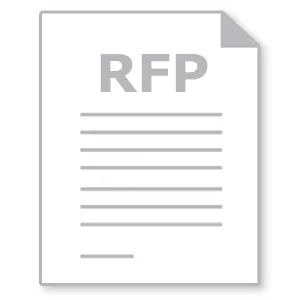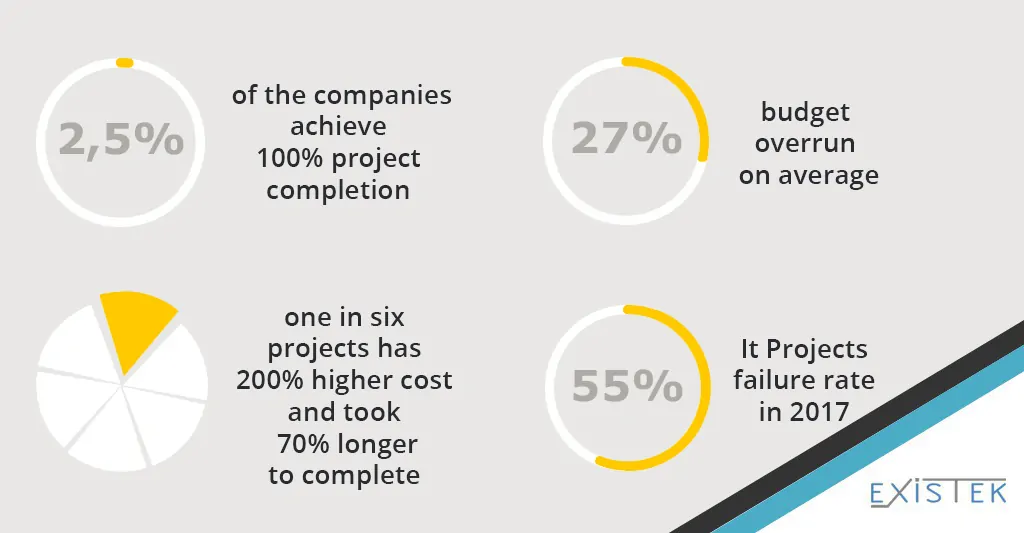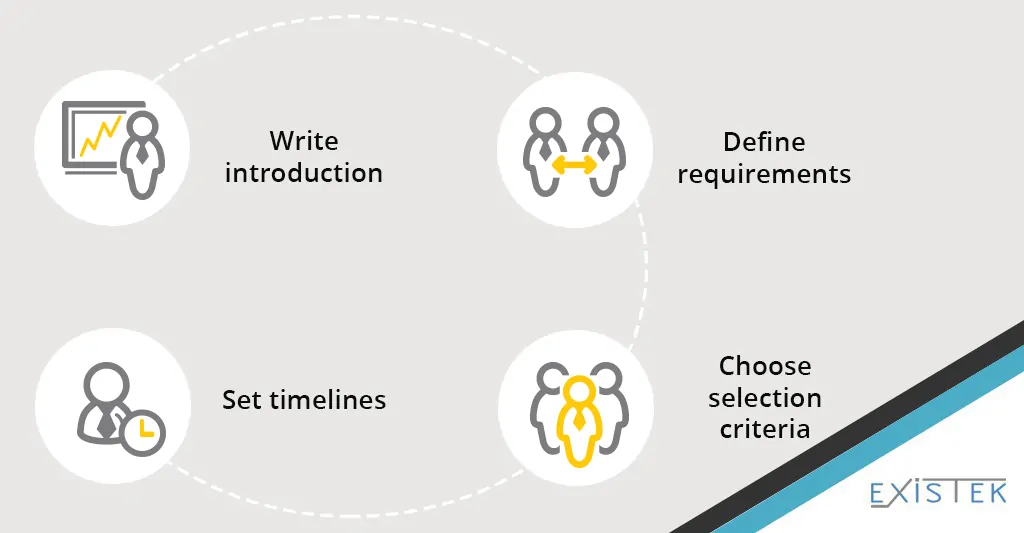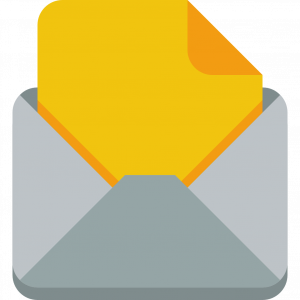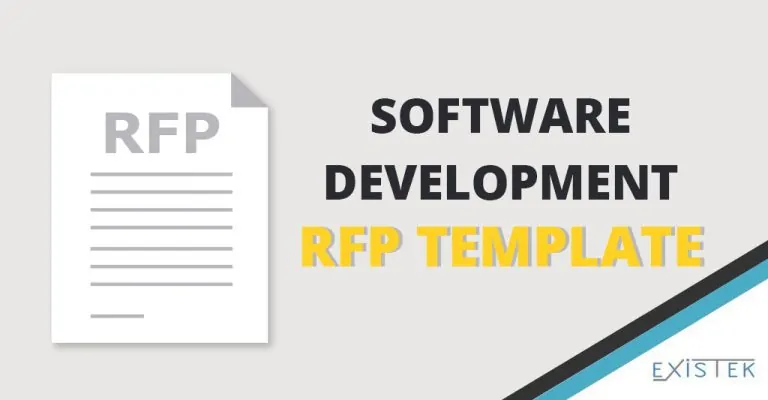
Updated: May 10, 2024
Published: November 28, 2017
Constant delays in software release dates, budget overruns, and development hell – we try to avoid these by any means, right? Learning how to write a request for proposal and spending extra time and effort on creating a good software RFP template will protect your development project from these threads.
Here’s the RFP template created specially for the software development project. Simply, enter your email in the form and you’ll immediately get the download link to your inbox.
Some Details About RFP Document For Software Development
- This is a request for proposal example tailored for software development projects.
- The document is already outlined and formatted. All you have to do is input your project details.
- Each section of the software RFP template is carefully explained so that you can easily follow the instructions.
In the article below, you’ll find an ultimate guide that will help you to fill in the RFP template for software or create your own software development RFP from scratch. Contact us with any questions and we’ll be happy to help you outline your future project’s details.
Table of Contents
- What an RFP is, how it is used and why it is important
- Who should write an RFP
- RFP format for software projects
- What should be in a software RFP template for development projects
- Letter of Interest
- In conclusion
What distinguishes an all-encompassing RFP for software development from a simple software RFP template? How do you write a request for proposal that will secure the long-term success of your upcoming software development project? These are the questions we’ll answer in this article. You’ll find an RFP template for software development, as well as practical advice about approaching this software RFP template and making it comprehensive for service providers.
WHAT IS AN RFP, HOW IT’S USED AND WHY IT’S IMPORTANT
Existek, as a custom software development company, works with dozens of RFPs every day. We have accumulated expertise on what the RFP format for software projects should be. Following, you’ll find helpful tips, advice, and examples that will help you write an effective software RFP template for development projects.
The journey to an excellent solution starts in this stage. This is when the project timelines, milestones, technologies and, finally, budget assumptions come to life.
First, to provide answers to the questions mentioned above, we must look at the request for proposal from a slightly different angle.
Obviously, when companies send RFPs to potential providers, they want to get the best prices. But what is “the best price”? Is it the lowest price or is it the best price-to-quality ratio? Many agree that the best price is not the lowest one because it often means a loss in other aspects of the goods/services.
Many companies approach writing a request for proposal with the mindset of getting the lowest possible price. However, market leaders advise searching for the best combination of price/value/expertise. For example, when you’re seeking service providers, you’re most likely to get bids from those that are cheaper and those that are more expensive. The hard truth is that most likely all the potential savings will be burned due to a lack of expertise from the provider’s side. More expensive developers often have the required experience to finish the project.
PricewaterhouseCoopers study of 10,640 projects among 200 companies in 30 countries shows that only 2.5% of the companies completed 100% of their IT projects.
Another study, by Harvard Business Review, shows that IT projects’ budgets tend to be, on average, 27% higher than the initial estimate. At the same time, one in six projects has a 200% higher cost and takes 70% longer to complete in comparison to the planned schedule.
The latest report by Project Management Institute shows promising numbers. In 2017, the failure rate in projects was 55%, which was significantly better than the 70% to 80% percent of previous years. Still, the bids are high, and you have to ask yourself whether the RFP software development you’re about to send will minimize those risks. Will the estimations of the development cost and time protect your project from failure? Not exactly. Vendors’ response to the software RFP template for development that you have filled out and sent to them is more like a promise. Your job is to get enough relevant information to determine which of the bidders has the best ability to fulfill that promise.
Besides the most obvious intention to get and compare prices, a request for proposal in software development is aimed at showing:
- Which of the service providers are interested in taking part in the development project.
- Which of these providers have experience and past projects in the same business vertical, industry, and type of software.
- How quickly these companies can launch the actual development process after the paperwork is done.
- Which of the service providers have the needed technical expertise and development resources.
- How the potential contractor sees the project timeline, project management approach, development lifecycle model, QA, testing and post-launch support.
Some of the best examples of requests for proposals in information technology consider these factors.
In writing a request for proposal, you create a foundation for a successful project, mostly by checking on whether your vision resonates with the service provider’s vision. At this stage, you’re starting to see the estimated project budget, timeline, scope and roadmap. It’s in your best interest to ensure that these estimations are as accurate as possible. Sure, you can see that something went wrong when you start developing the Functional Specification Document (FSD) and/or Product Requirement Document (PRD). This will save your company from a disastrous project. However, in most cases, the creation of these documents starts after long negotiations and the signing of the contract. Nobody wants it to click in their mind, in the middle of writing the FSD, that lots of effort and money have been spent in vain because the service provider wasn’t able to interpret the poorly done RFP for software projects.
WHO SHOULD WRITE A SOFTWARE RFP TEMPLATE FOR DEVELOPMENT PROJECTS?
An RFP for software development projects is the product of collaboration. It can be written by the business analyst, product manager, product owner, or even project manager. The main thing is that it should be done in collaboration with the technical person who has at least a basic understanding of how things described in the request for proposal can be done. The RFP development process varies from organization to organization.
Usually, the functionality requirements come from the division of the company that will be using the requested software. The specification requirements come from the technical people. In simple terms, users say what should be done and technicians say how this should be done. After that, the company may conclude that it doesn’t have the appropriate development capabilities or expertise internally and, thus, look for assistance from third-party vendors.
RFP FORMAT FOR SOFTWARE PROJECTS
When we talk about the RFP for software development, some specific questions should be there. A common mistake is that custom software development is sometimes treated like a purchase instead of a service. In fact, this will be day-after-day work and collaboration between external and internal teams. If you don’t have either the expertise or the time to control the process by yourself, many providers offer a full-cycle development service. Your task here is to get information about whether the potential provider has already delivered similar services to somebody else.
This is not about getting and comparing bids. Rather, it’s about getting as much information about the software development company as possible. Engage with the providers and find out which of them is the most responsive in terms of communication and which of them shares your values.
Provider’s Background Information
Most RFP templates for software include a section in which you tell the vendors about your company, your business mission and the challenge they must solve for you. That’s certainly good; it gives them context, which helps the software company evaluate your project. But is that going to help you evaluate the vendor?
A request for proposal should also include obligatory questions about the vendor’s background, not just standard “present yourself as a company and why you fit this project.” This is too vague and you’re likely to get replies that are impossible to compare side by side. Or you’ll receive the standard marketing text which all of them have prepared for such cases. This shows that they have branding and marketing teams, which is nice, but that’s not on the agenda. Here are few questions that will help you determine whether the vendor will be able to deliver what’s promised.
- How long have you been in business?
- What’s your management structure?
- Which industries and business verticals do you work with?
- What’s your client retention rate and the number of projects per client?
- How many employees do you have and how many employees did you have a year ago?
- What is the total number of projects you have completed in the past three years?
Relevant Projects
The provider with experience in similar projects and industries will always be one of the cheapest – though not necessarily on paper or in the RFP software template. The total cost of engagement might be precisely calculated after project completion or product release. It includes the time the in-house team spent on collaboration with the service provider, time and budget overrun, post-launch support, QA, etc.
The company that has relevant experience will be good at two things: making precise estimations and delivering according to those estimations. This company already knows the best practices and challenges related to the industry or technology. Also, it usually has some developments and shortcuts prior to project launch. All this makes such a company the perfect executor of similar projects in the future.
To learn more about previous projects, you can ask the following questions:
- What was the size of a similar project on which you worked, including the size of the team, the duration and the outcome?
- Do you have client references for that project?
- Was this project successful and completed on time and within the budget? Why or why not?
Human Resource Management
Happy people tend to produce more value. That’s an axiom. Any project can have flaws in planning, management, technology, etc. Poorly motivated employees can dramatically increase the impact of those issues. On the other hand, a company that actually cares about its employees is likely to more easily overcome challenges. Following are questions you should include in the RFP document for software development to get a basic understanding of the situation.
- What’s your employee retention rate?
- Do you have professional growth programs?
- What’s your hiring strategy?
- Are your employees involved in publications, events and blogs/articles?
WHAT SHOULD BE IN A SOFTWARE RFP TEMPLATE FOR DEVELOPMENT PROJECTS?
Introduction – In this section, you let the service providers know about your main goal. Why are you publishing or sending them a request for proposal and what do you want to accomplish by doing so? Give them the basic understanding of the required solution, its main purpose and the challenges it must solve. Also, the introduction may include the deadline after which bids will no longer be accepted.
Example: Company Name is the leading provider of electronic document management solutions for SMEs. We request a proposal for the development of custom character recognition software that will create digital copies of paper documents. The software must work with 99% accuracy and categorize the data in fields.
Requirements – This is the hardest-to-complete section, and requires a significant amount of time and effort. Unsurprisingly, it defines the success of the vendors’ evaluation process. In the case of a software development RFP, this section is usually divided into subsections. Each explains the technical and functional specifications from different angles. In the given example, you’ll find a small piece of what should appear in the final document. For more details, see the instructions in the software RFP template.
Example: The solution should work on the optical character recognition technique with the following list of hardware: scanner model 1, scanner model 2, etc.
Selection criteria – Obviously, you’ll write the request for proposal with some selection criteria in mind. Even if you haven’t completely shaped your criteria, some aspects of the project may affect the final decision more than others. For instance, if you’re a startup company, you will definitely look at the RFPs that present a lower price and a shorter time for the project kick-off. With respect to banking, references in the financial sphere and the reputation of the solution provider will be more important than cutting 10% of the costs. We advise that you not keep this only in your head. If some aspects worry you more than others, let the software development companies know. It’s a win-win approach because you’ll get more information about the details that actually matter to you while letting the providers present themselves with respect to the factors that are most relevant.
Example: Please note that Company Name will select the provider, if any, taking into consideration the provider’s ability to start the project as close to the requested date as possible.
Timelines – This section provides information about the timelines for the evaluation process. Here you should give the date after which responses to the request for proposal will no longer be accepted, the date when the Q&A session will be held, how much time your team will need to complete the evaluation and when the winner will be selected. Also, it is worth deciding whether you’ll notify service providers about which of them has been selected for the project and when to do that. If you’re making the request for a solution or integration with high complexity, give the developers sufficient time to respond to your request for proposal. This will help ensure that you receive accurate estimates.
Example: Vendor’s evaluation process timelines: Request for proposal released – 11.30.2017; Notification of intent to bid – 12.10.2017; Deadline for questions – 12.12.2017; Q&A webinar session – 12.14.2017; Follow up to questions – 12.17.2017; Deadline for proposals – 12.22.2017; Finalists notified – 01.10.2018; Interview with finalists – 01.15 – 01.22.2018; Notification about the selected candidate – 02.01.2018.
LETTER OF INTEREST
Intellectual property is very important, especially in software development. Even the pure idea behind a product that does not have analogs on the market or that has unique features is valuable in itself and may be worth millions. In most cases, privately held companies are free to choose whether to make their RFPs public.
What if you don’t want to share your request for proposal with as many people as possible? How do you justify the risks and ensure that everybody who receives your request for proposal will respond to it?
Many companies use a letter of interest. This is a letter with a very brief description of your business, project and deadlines. The main purpose of sending this letter is to begin the conversation with the service provider before you send the RFP for software and confirm that the provider is interested in bidding. Optionally, you may ask developers to sign an NDA before they receive the request for proposal.
For convenience, following is an example of such a letter.
Hello,
Our company is a _____________ . We are looking for the team of professionals to develop a ___________ for the internal needs.
Such a platform should ____________
A detailed RFP (Request for Proposal) will be provided upon execution of an NDA.
Please submit LOI (Letter of Interest) including availability, rates, qualifications, and relevant experience of your team for such a project.
Deadline for LOI submissions: 5 business days.
IN CONCLUSION
When you are looking for a software RFP template for development projects, it’s important to remember that the quality of the replies will depend heavily on the effort you have put into the software RFP template. A good request for proposal example will help you complete it faster and better, but won’t write the product specifications for you. Instead, it will show you where and how to write an RFP.
Do your homework, and outline the differences between the functionality and features that are “must have” and “nice to have.” Sure, it would be nice if, for example, your electronic document management solutions recognized and added graphical information like logos to digital copies of documents, but is that really necessary? Obligatory requirements can be expressed with such words as “must,” “should” and “will.” A functionality that is “nice to have” can be outlined with “can,” “optionally” and “may.”
A request for proposal that is too vague will lead to three things – risky bids, a low response rate from experienced and recognized developers, and lots of questions from bidders. Later, you’ll have to answer those questions for each bidder separately anyway, so it makes sense to avoid that by writing an all-embracing software development RFP.
What’s your approach to writing the RFP format for software projects? Which parts of the request for proposal seem the most complex? Leave your questions and opinions in the comment section below.
If you have any difficulties outlining your project specifications, selecting the technology or navigating the development process in general, send us your inquiry directly and our team will be happy to help you.

